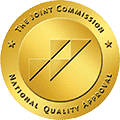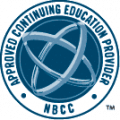Adolescence is an exciting and critical time a person’s life. Typically, this period refers to the ages of 13 to 18, when a child enters their teenage years and moves toward adulthood. These years are marked by physiological and psychological changes that can impact that child’s life and that of their loved ones.
During adolescence, young people face changes and challenges that can be scary. Unfortunately, many also engage in high-risk and impulsive acts such as using drugs and alcohol. The National Institute on Drug Abuse (NIDA) has just launchedtwo new toolsthat can help screen foradolescent substance use.
New Screening Tools For Adolescent Substance Use
The NIDA announced on Nov. 1 that it had released two new evidence-based screening tools to help assess the risk of a substance abuse disorder among adolescents ages 12-17. These online tools can be either self-administered or completed by a clinician in a just a few minutes. The tools are offered on theNIDAMED Web Portal, and the patient or provider can choose whichever tool is most appropriate.
The “Brief Screener for Alcohol, Tobacco, and Other Drugs (BSTAD)” is one example. The survey asks how many days over the past year the adolescent used tobacco products, drank alcohol, and used marijuana. There are also questions about specific types of drugs such asopioids, cocaine, and amphetamines. If there is a risk of substance abuse, the screener will identify it and give a recommendation for intervention.
The Growing Problem of Adolescent Substance Abuse
According to theNIDA,近70%的高中学生tried alcohol by the time they reach their senior year, 40 percent have smoked a cigarette, and 20 percent have used prescription drugs for nonmedical purposes. Adolescents may be drawn to these substances as a thrill, to cope with a variety of issues, or simply due to peer pressure. Regardless of the motivation, their use can be dangerous.
Adolescent brains are not fully developed and the overuse of substances can impact this development and lead to other problems. Risky behavior can result in injuries, academic issues, and problems at home. Finally, there is always the chance that using drugs and alcohol can evolve into a serious substance abuse issue that requires intervention.
-

- If your teen has a substance abuse issue, you can get him the help he needs to recover.
Where Can Parents of Addicted Adolescents Turn for Help?
Drugs are a prolific problem in this country, and this nation’s opioid crisis gives parents every reason to be concerned about the health and welfare of their adolescent children. Beyond the physical evidence of the drugs themselves, other signs that your teen might have a drug problem include problems at school, behavior and appearance changes, secrets, new friends, and financial difficulties.
Having a teen with a substance abuse issue can be heartbreaking, but there is hope. Parents are encouraged to take action as quickly as possible by reaching out for professional help. The Recovery Village specializes inadolescent substance abuse treatmentand can help guide your teen and your loved ones toward a new way of life.





